Cairn Characteristics
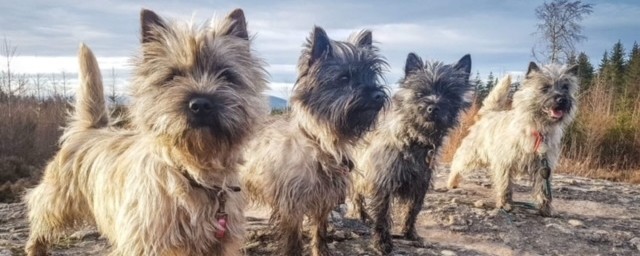
Over 200 years ago, on the ancient Isle of Skye and in the Scottish Highlands, the ancestors of today’s Cairn Terrier earned their keep routing vermin from the rock piles (called cairns) commonly found on Scottish farmland.
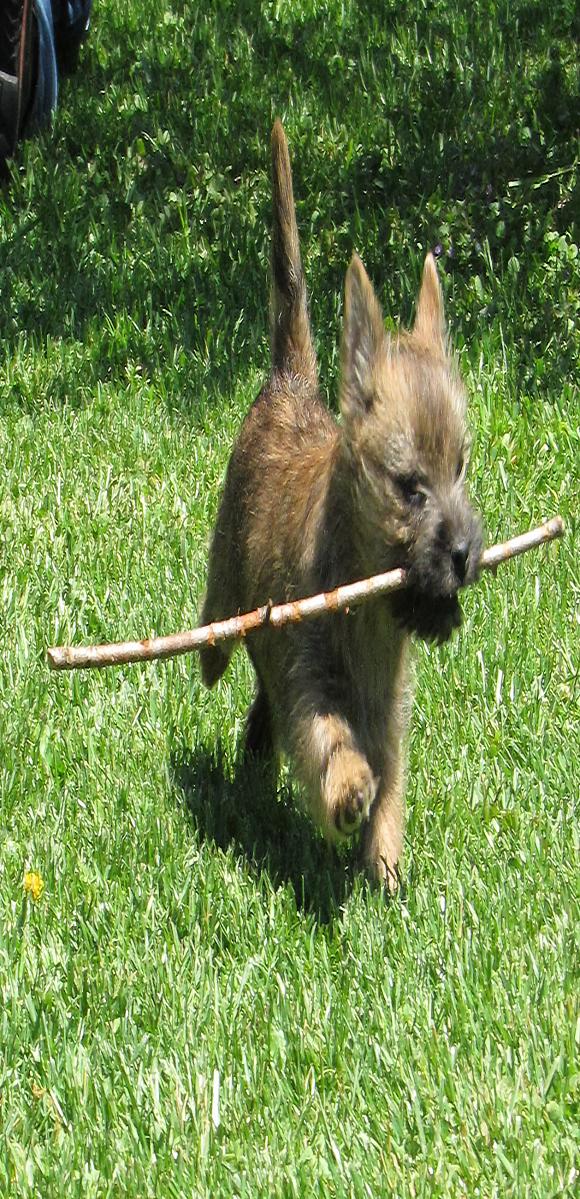
These early terriers were highly prized and bred for their working ability, not appearance. Such characteristics as courage, tenacity and intelligence, housed in a sturdy body clad in a weather-proof coat, armed with big teeth in strong jaws, were sought generation after generation. Gradually the breeds known as the Scottish Terrier and the West Highland White evolved and were named. The Cairn (the last to be formally named) remained the closest to the original small working terrier, bolting the fox, otter and weasel, sharing the meager fare of the crofter’s household.
Today the Cairn Terrier in America is a sensible, confident little dog, independent but friendly with everyone he meets. He may be found in an apartment, suburban home, or on a farm. Alert, intelligent and long-lived, the Cairn tends to remain active and playful well into his teen years, endearing him to children. True to his heritage, the breed still has very large teeth, large feet with thick pads and strong nails (the better to dig with!), strong, muscular shoulders and rears, and a fearless tenacity that will lead him into trouble if his owners are irresponsible. The Cairn Terrier Club of America is dedicated to preserving and promoting the welfare of the Cairn Terrier and wants to help you decide if a Cairn Terrier is the right dog to share your life.
Appearance
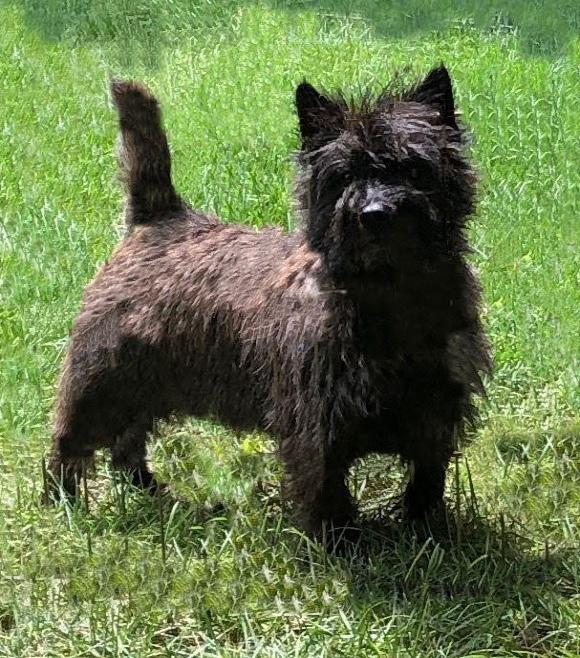
The immediate impression should be that of a small, shaggy, alert dog, head, tail and ears up, eyes shining with intelligence, poised and ready for anything.
The Cairn comes in a variety of colors except for white. All shades are attractive, and you will love your Cairn whatever color he turns out to be. It can be difficult if not impossible to predict adult color based on the puppy coat. Color changes in many Cairns continue for years, most brindles eventually becoming very dark, bordering on black. Some wheatens and reds also darken while others may remain light.
Standing 9-1/2 to 11 inches tall and weighing 15 to 18 pounds, the Cairn is truly a big dog in a small package. Cairn Terriers are small enough to carry easily and to fit comfortably on your lap, but tough enough to enjoy romping with children. Their sturdy appearance makes them especially appropriate as a man’s pet; no man who has ever owned one was embarrassed by his “little” dog.
Temperament and Training
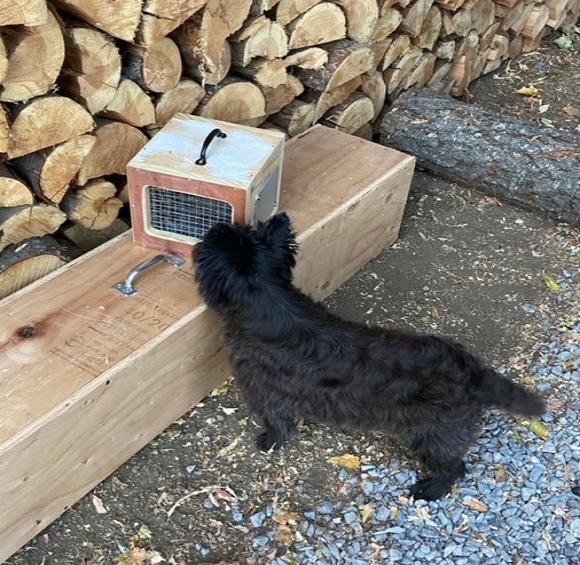
No two Cairns are truly alike; each has distinct personality and character differences. As a rule, though, Cairns are highly social to their humans but remain somewhat independent. A typical puppy may sit on your lap for a few moments, but will resist being held for long, wriggling impatiently to get down and explore. Their intelligence makes them curious and extremely quick to learn. They are surprisingly sensitive, and harsh punishment is not necessary or desirable. However, a Cairn must know from the start that someone else is in charge of the pack. If he has any question who is the leader, he’ll do his best to run the house himself. Firm, loving and consistent discipline is the key to a good relationship with your Cairn Terrier.
Cairns seem to have an inborn affinity for children. They are physically very tough, and forgive or overlook mishaps and stepped-on feet with characteristic generosity of spirit. They should not, however, be teased or mistreated by children, and close supervision of small children and puppies is essential. Puppies need time away from even the best-behaved children and should be provided with a place where they can rest undisturbed until they are ready to play again. A “kennel” or crate is highly recommended. Used properly, a crate ensures the puppy’s safety and facilitates housetraining as well. A Cairn thrives on attention and training and suffers from lack of it. Without training, he will be bored and destructive, barking to help relieve the tedium. There is very little a Cairn cannot learn if his owner takes the time to teach him. Because Cairns are highly intelligent, training sessions should be fun and challenging, not overly repetitious. They do love to dig, and flowerbeds are hard to resist; don’t tempt your puppy by leaving him alone in a manicured yard.
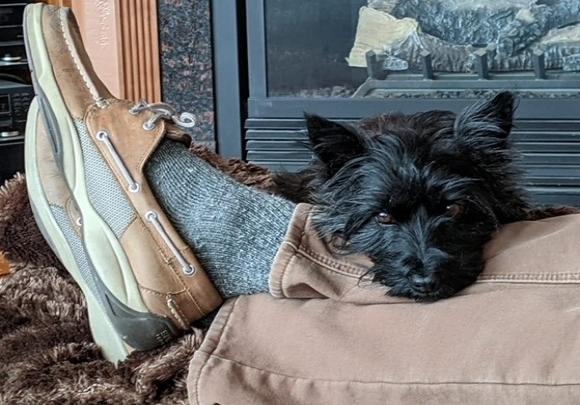
Cairns are not suited to living outside. They are far more rewarding pets when they live in close contact with the family. Being left “tied out” in an unfenced yard can be dangerous to the Cairn as he is vulnerable to any attack that he might invite from larger dogs. The safest arrangement is a securely fenced yard and supervision when he is in it. If there is no fenced yard, the Cairn MUST be exercised on a leash, as it is impossible to train a Cairn to resist the urge to chase squirrels, cats, rabbits, other dogs, etc. Remember, Cairns were bred to hunt!
Walking is excellent exercise for Cairns and their owners. A brisk walk daily, on leash, is ideal. From the Cairn’s point of view, the longer the walk the better. Encourage your puppy’s natural ball playing talents, and you’ll have the perfect indoor exercise when the weather prohibits walking.
Health and Feeding Requirements
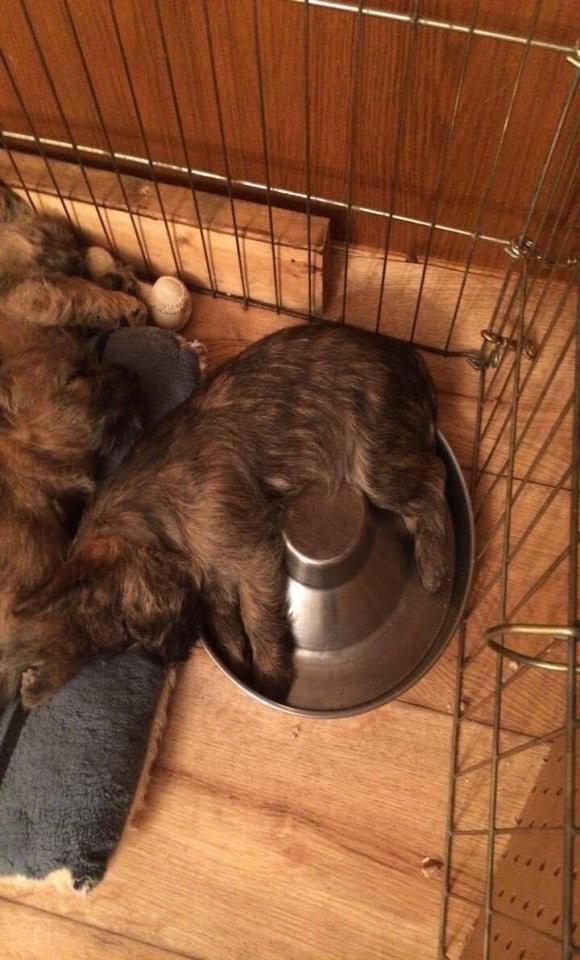
The Cairn Terrier is a basically healthy dog, and frequently lives 14 to 15 years or more. To contribute to his longevity and health a Cairn should be kept trim and active. His diet should consist of a premium brand of dry dog food. NO “generic” dog food, please! Table scraps should not be fed, and the amount of dog food must be carefully monitored. Most adult dogs maintain their weight on 1/2 to 2/3 cup of quality food a day. Dog biscuit treats should be kept to a maximum of 2-3 daily. Cairns easily become overweight, at least in part because they are so endearing as they beg for treats.
Grooming
Maintaining the Cairn’s shaggy appearance is not difficult. An hour or so of grooming each week will keep his coat in good condition.
Shedding is minimal if the dog is thoroughly brushed and combed weekly, and infrequently bathed. Preparation for the show ring is comparatively simple, also. It is important to keep a Cairn free of fleas, as many Cairns are allergic to flea bites. (A booklet on grooming the Cairn Terrier is available from the Cairn Terrier Club of America at a modest price).
Selecting a Breeder
Once you have decided you want a Cairn you will need to locate a breeder. A properly reared and socialized puppy from a conscientious breeder will be worth the effort you will need to find him. The Cairn Terrier Club of America will provide you with a list of member breeders in your area. The breeders on the list will be concerned, caring individuals who want to know as much about you as you want to know about their puppies.
You will have the opportunity to see where your puppy was raised, and, in many cases, several generations of his ancestors. Be sure to spend time with these older dogs before you begin to look at the puppies. Their personality and appearance are good indicators of how the puppies will mature. Adult Cairns should also appear healthy, clean and reasonably well groomed.
When you choose a puppy from a responsible breeder, you will have someone to call on for advice and assistance in all aspects of puppy care and rearing. A good breeder’s commitment to his or her puppies is lifelong, and he or she will welcome your questions, now and for the life of your Cairn.
Pet or Show
One of the questions you will be asked by a reputable breeder is whether you wish to show or breed your puppy. A young puppy can have “show potential” but cannot be guaranteed show quality. If you will be unhappy if the puppy does not turn out to be a successful show dog, you should consider an older puppy. Between the ages of 6 and 12 months a breeder can determine if a puppy will measure up to the Standard.
Most people know they want a “pet”, but may not understand why buying from a puppy mill or pet shop is not a good idea. Many of the qualities which breeders select in their efforts to produce show dogs are also essential for pets. A Cairn bred for the show ring will be healthy, friendly, stable in temperament, alert and intelligent. The “pet” puppy whose parents are show dogs has an excellent chance of having his parent’s quality. He may fall short in some small way from being competitive in the ring, but the chances are you would not even know what the fault was if you did not ask. This pet puppy has the same parents, the same prenatal care, the same environment and the same socialization as the one the breeder will later take into the ring. He will be a dog others will admire and one that you can take pride in owning.
Male or Female
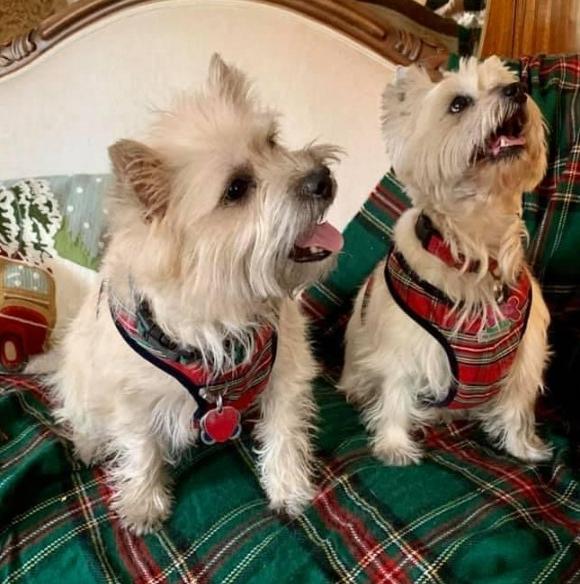
Fifty years ago, when females were not routinely spayed, males were considered more desirable. Few families wanted females as who would want “all those male dogs hanging around twice a year!” Then spaying became routine, and now most people think a female is the better choice. Actually, both make equally satisfactory pets. A neutered male does not “mark” inside or out if he is neutered at the appropriate age, nor does he exhibit other undesirable characteristics many associate with male dogs. Many Cairn breeders feel the male is more affectionate. The females tend to be a bit more independent. Most breeders will expect you to spay or neuter your pet Cairn, both as a preventive health procedure and to prevent future breeding.
Which Puppy

When you find a breeder you respect, spend time discussing your family and your lifestyle, and then trust your breeder to pick a puppy for you. The breeder has spent weeks or months with the puppies and knows their personality and temperament. The reputable breeder wants you to have the puppy that best suits you, and with which you will be happy. If you aren’t happy the breeder knows the puppy won’t be happy either. Most reputable breeders will require unwanted puppies be returned to them.
Most breeders do not sell puppies younger than 10 weeks of age, and many will not sell a puppy under 12 weeks, or even older, depending on the new owner’s living arrangements and lifestyle. If your breeder suggests that an older puppy or even a young adult would be better for you, keep an open mind and consider the possibility. People who are away from home for eight hours or more a day are not ideally suited to raising a very young puppy. Breeders sometimes have puppies that are older, such as six, eight, or ten months. These have often been reserved by the breeder as potential show prospects. These older puppies will be housetrained much sooner than a very young puppy. If they have been socialized, they may be the ideal choice for a working family. In some circumstances an adult dog, possibly already housetrained, may be available. Cairns are very adaptable to new circumstances and quickly make themselves part of their new family, enabling those who could not raise a puppy to have the company of a Cairn. Breeders may also have older dogs, 3 to 5 years, that have been shown but will may not be kept for breeding. Selecting a “retired” Champion usually means your potential pet has been trained, socialized, has full health screening, and comes without the need for housetraining.
The Cairn Terrier Club of America hopes that this information will help you make an informed choice as you select a dog for your family. If your choice is a Cairn Terrier, we welcome you to the wonderful world of Cairns, a fellowship that unites Cairn lovers everywhere. Chances are that this first Cairn Terrier will not be your last. Cairn owners become loyal fanciers and seldom want another breed once they’ve owned a Cairn. Many say the only thing better than owning a Cairn is owning two!